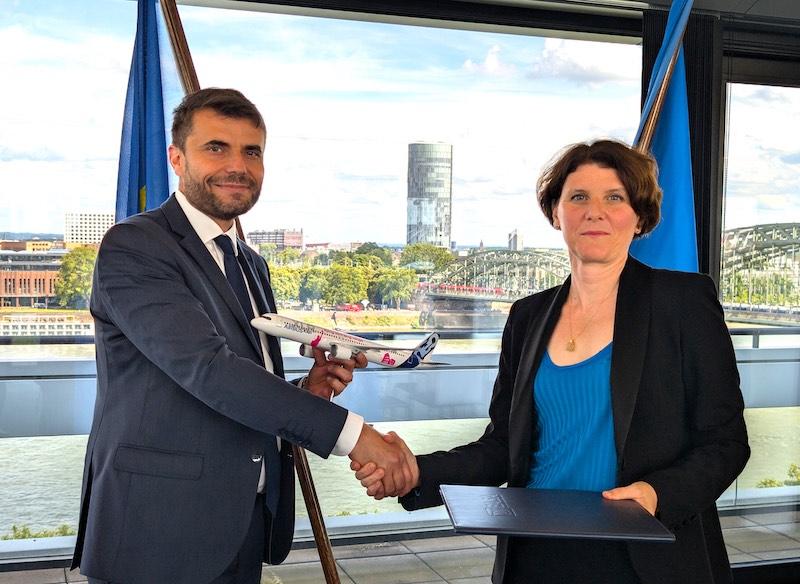
EASA's Florian Guillermet and Airbus' A321XLR Chief Engineer Isabelle Bloy pictured in Cologne after the long-range A321neo variant was certified.
LYON—The Airbus A321XLR equipped with CFM Leap 1A engines has received its type certification from the European Union Aviation Safety Agency, Airbus announced July 19, marking a long-awaited conclusion to the A321neo variant's development.
Airbus and its A321XLR customers can now focus on entry into service with Iberia designated the launch customer. Thanks to its range of 4,700 nm, the narrowbody aircraft has the potential to change the structure of long-haul networks. In the shorter term, Airbus will use the term “certified” as part of its sales pitch when the aircraft is exhibited at the Farnborough Airshow July 22-26. More than 500 A321XLRs have been ordered so far, according to the Aviation Week Network Fleet Discovery database.
At EASA headquarters in Cologne, Germany, Executive Director Florian Guillermet handed over the type certificate to Airbus' A321XLR Chief Engineer Isabelle Bloy. Certification of the A321XLR equipped with the Pratt & Whitney PW1100G engine is expected later in 2024.
On July 18, Airbus rolled out the first A321XLR from its paint shop in Hamburg. The aircraft is the first of eight to be delivered to Iberia in the third quarter. The Spanish flag-carrier plans to introduce the XLR on its Madrid-Boston route in November.
The A321XLR program was launched in 2019 and the first A321XLR flight took off in June 2022. A test program involving three aircraft followed.
One of the certification challenges that has contributed to delivery delays centered on the new rear center fuel tank, which allows the XLR to fly an extra 700 nm. EASA and Airbus had been debating the level of fire protection needed for the tank, and the requirements that EASA put forward forced Airbus to find new ways to save weight elsewhere and, therefore, be able to keep commitments made to customers regarding the aircraft’s range.
Airbus asserts that the XLR will feature about 30% lower fuel burn than the Boeing 757, considered its predecessor, creating economic viability for thinner routes and new business models for long-haul travel. Single-class configurations will be able to accommodate as many as 244 passengers.
In particular, the enhanced range and economics make it a versatile option for airlines wanting to enter thinner medium- and long-haul sectors without the capacity and operating costs of a widebody.

